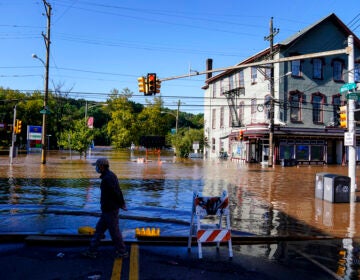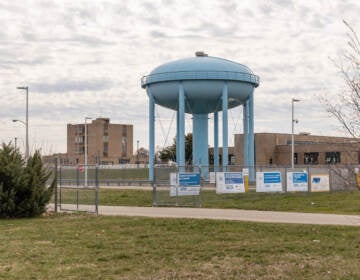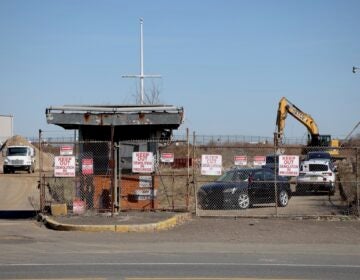Philadelphia Water Department celebrates improved waterways in Manayunk
The Philadelphia Water Department restored water flow from the Schuylkill River to the Manayunk Canal.
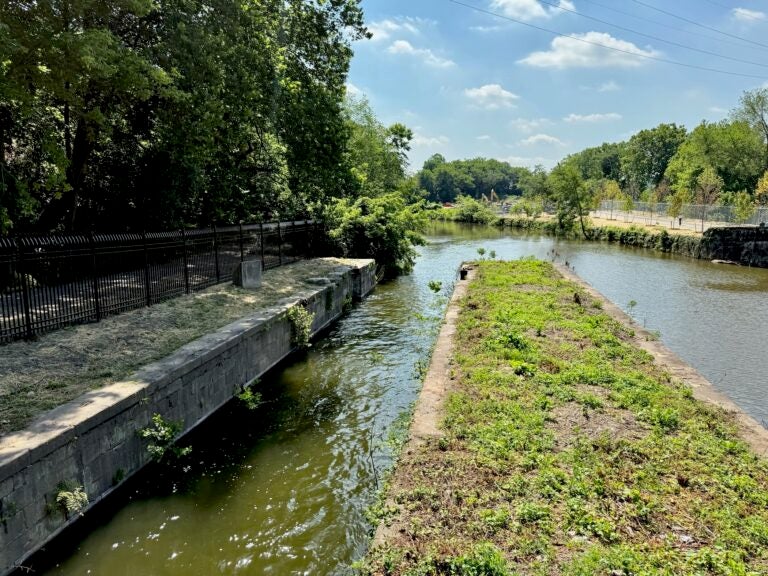
The Flat Rock Dam Project reintroduces fresh water flow into the Manayunk Canal, improving water quality. The canal was closed to navigation in the 1940s, and had been cut off from the Schuylkill River for decades. (Zoe Read/WHYY)
From Philly and the Pa. suburbs to South Jersey and Delaware, what would you like WHYY News to cover? Let us know!
For decades, the Manayunk Canal suffered from poor water quality, including low dissolved oxygen, algal blooms and sedimentation.
But the waterway, which previously was not healthy enough to support sensitive fish species, is now providing habitat for striped bass and shad — the likes of which had not been seen in the 2-mile canal in years.
The Philadelphia Water Department credits the improvements to the Flat Rock Dam Project. The project reconnected the Manayunk Canal and the Schuylkill River at the dam — restoring water flow to the canal for the first time in about 80 years.
The project, completed in April, was celebrated Thursday during a ribbon cutting ceremony. The initiative was funded with a $21 million PENNVEST loan, a state-run program that provides financial assistance for water projects.
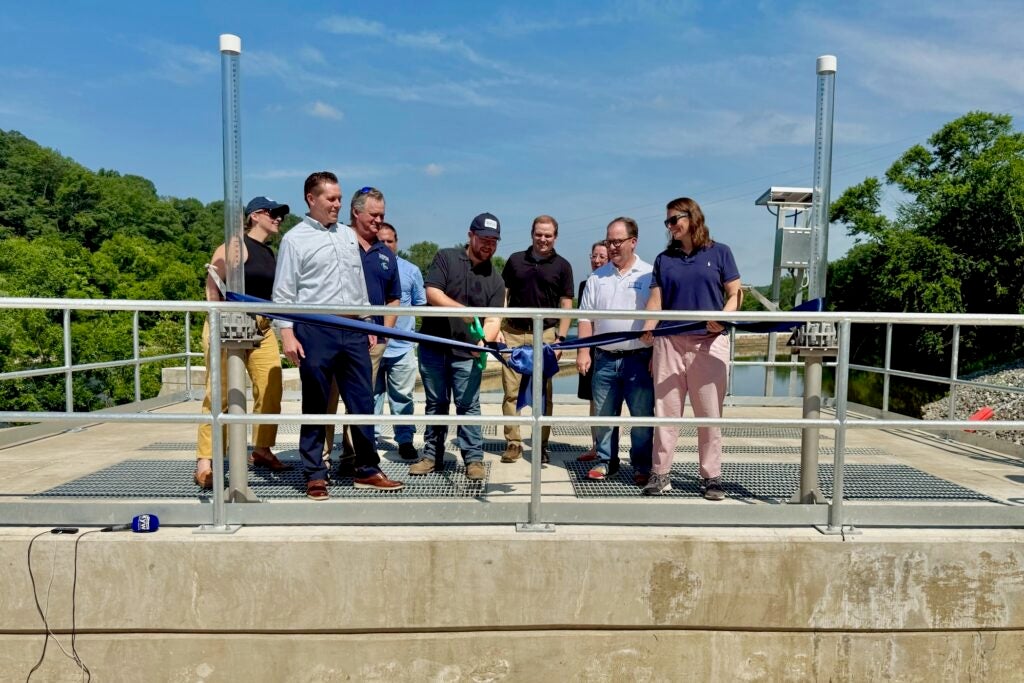
“It’s pretty impressive to see those fish that are drawn to higher flows and cleaner oxygenated water, which we didn’t see in this area a little bit over two months ago,” said Kelly Anderson, director of the Philadelphia Water Department’s Office of Watersheds.
The canal, part of the greater Schuylkill Watershed, was historically used to send coal to textile mills. However, the waterway was closed to navigation and cut off from the river in the 1940s, and there had been no steady flow of water coming out of it since.
In the decades following the closure of the Manayunk Canal, sediment began to build up near the Flat Rock Dam. The lack of water flow there caused low oxygen levels below the surface, making it difficult for fish to thrive. Conditions worsened during hot days, increasing the risk of fishkills.
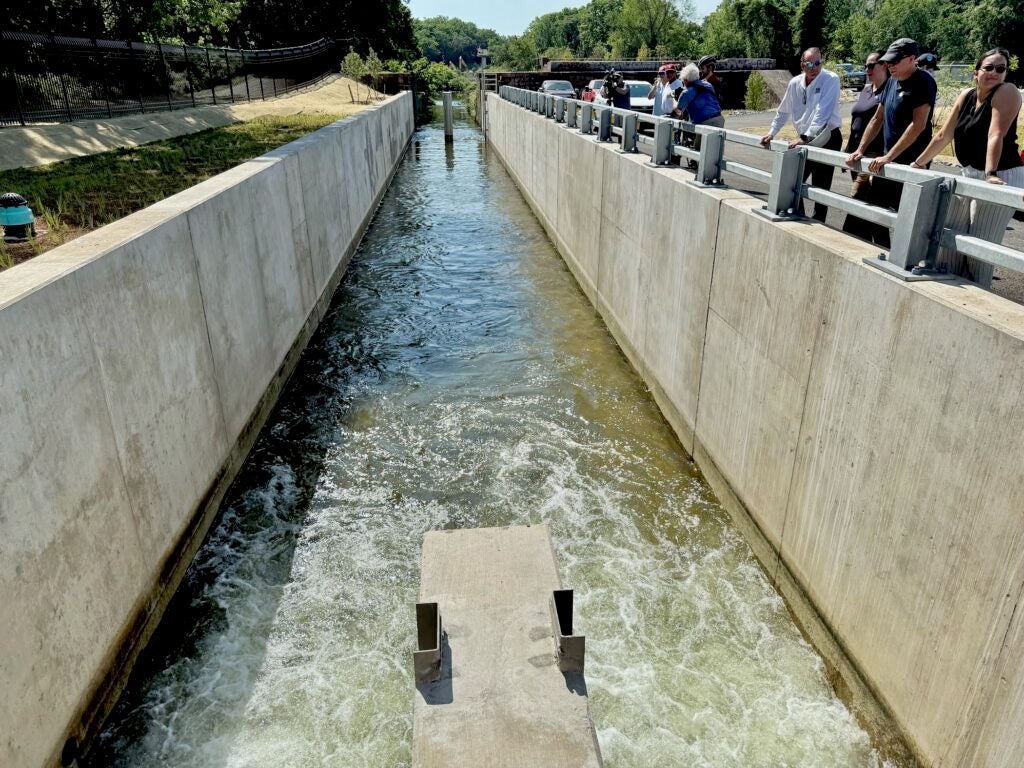
City crews excavated the sediment and restored the connection to the canal that originally existed. The work included building new structures to connect the waterways, improving existing structures and preserving historic elements at the Feeder Gate House building. The site also includes green infrastructure to manage stormwater.
“You can see the historic structure in its stabilized and preserved state as we have completed some masonry repairs and installed the historic artifacts that have existed here, as well our new concrete channel leading up to the intake structure for the new canal,” said Ian McKane, a project engineer for the Philadelphia Water Department.
At the intake structure, two gates allow water to enter the canal at controlled rates to reach desired oxygen levels, McKane said.
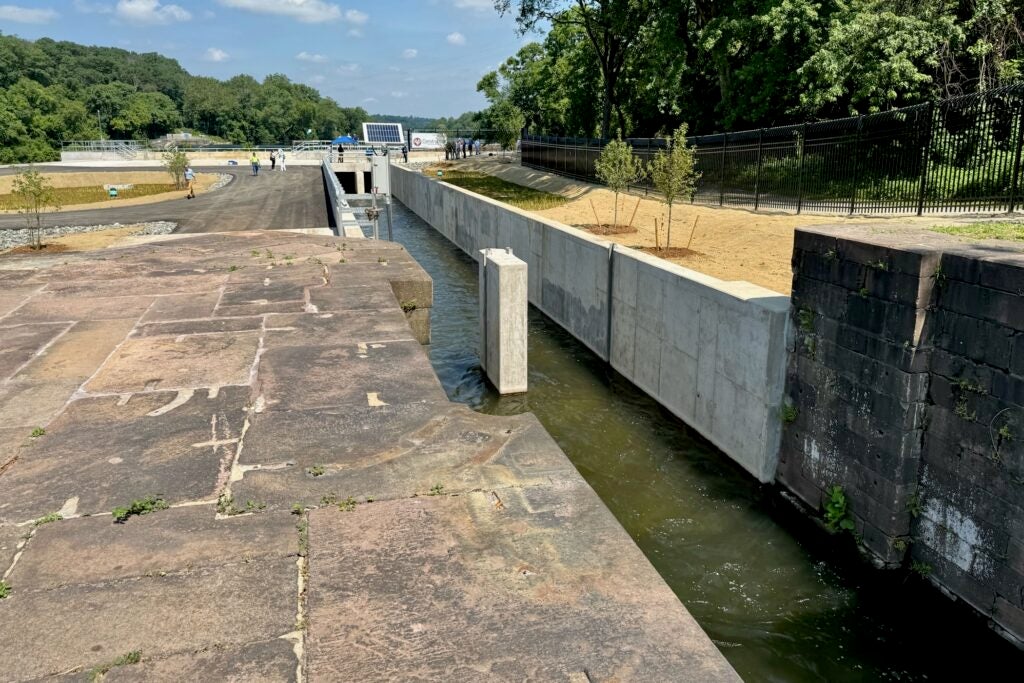
Since restoring flow to the canal, larger fish species are reappearing as oxygen levels have improved and algae and sediment have been reduced.
The water department will collect water samples to determine whether the project is improving drinking water, which for nearly half of the city is sourced from the Schuylkill River.
“This is one of the most hopeful and amazing projects that I’ve been able to work on as a scientist,” Anderson said. “I’ve worked for the department for over 20 years, and to see these improvements that I know are directly impacting the quality of drinking water that I’m drinking and my family’s drinking is really impactful and important.”
Hikers and bikers can access the Flat Rock Dam via the Schuylkill River Trail, which connects the city of Philadelphia to Schuylkill County.


Get daily updates from WHYY News!
WHYY is your source for fact-based, in-depth journalism and information. As a nonprofit organization, we rely on financial support from readers like you. Please give today.



